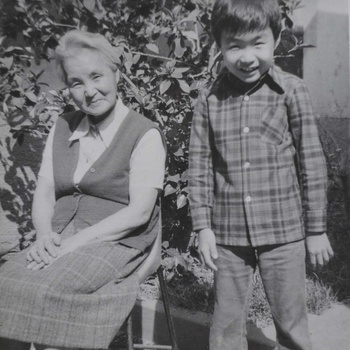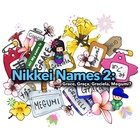My name is Gustavo. It’s the Spanish name that my Nisei parents gave me, but my Issei grandparents chose a Japanese name for me: Satoru.
I am Sansei, a third-generation Japanese-Peruvian Nikkei who did get to know his grandparents who came from Japan and was able to have the opportunity during childhood to have some approach to the culture of Japan within his own family.
The meaning of Satoru is difficult to understand in Spanish. According to Wikipedia, it translates “to understand” or “to comprehend,” but the meaning is deeper. I think the best way to understand it is as what my grandparents expected of me, as the first, and only grandchild of my mother’s family.
It also means the search for knowledge and self-improvement, which are skills that in some way, my grandparents wanted to transmit to me through this name.
Unfortunately, in Latin American countries, names are designated by “how it sounds” rather than wishes. Gustavo was nicer to say even by my relatives despite being Nikkei. So, after my grandparents, unfortunately almost no one called me by my name in Japanese and it was lost to the point that the only one who remembered it was me.
Legally, my name Satoru was never registered anywhere. It was not common for Nikkei families to register Japanese names. Usually the Japanese name was a nickname used within Nikkei relatives or friends. The criteria of choice sometimes was the wishes of the grandparents, but many times it was more like “how it sounds” or “that name is beautiful,” a kind of mix between the criteria for choosing Latin American names with Japanese names.
Even within the Nikkei community in Peru itself, the name Satoru was extremely rare. In the ’70s and ’80s it was common to hear other names, such as Akemi, Sayuri, Yuki, Kenji. But, my name was very strange, so my Nikkei friends found it strange and a little difficult to pronounce. So, they never called me by my name in Japanese.
I remember that a Japanese language teacher at school wanted to make the class more enjoyable and educate us about the culture of Japan by explaining that names have a meaning. He dedicated a class to explaining the meaning of each of the Japanese names we had, but when he came to me, the teacher could not explain in Spanish the meaning of my name.
It is possible that I was not called by my Japanese name by my own relatives to avoid discrimination, since 40 or 50 years ago people with “different” names not in Spanish were considered strangers or were immediately associated with foreigners. I mean, you were weird if you didn’t have a name in Spanish. But the truth was that since very few relatives called me by that name, little by little they were forgotten and at some point, it ended up being ignored even with my own relatives.
Years later when my daughter was born, I wanted to give the same wishes that my grandparents had for me, but this time to my daughter. After a lot of research with my wife we chose my daughter’s name, looking for it to reflect very spiritual wishes of what we expect from her, but at the same time it is a name that can be pronounced in Spanish with ease so that the name lasts and does not have the same fate as Satoru.
Today, several years after my daughter was born, I feel very happy because I believe that I have been able to give the legacy and wishes of my grandparents to the next generation through my daughter’s name.
© 2024 Gustavo Miyamoto
Nima-kai Favorites
Each article submitted to this Nikkei Chronicles special series was eligible for selection as the community favorite. Thank you to everyone who voted!











